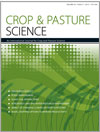This paper reviews current knowledge for Australia over the occurrence, losses caused, epidemiology, and management of virus diseases of pasture grasses. It also reviews all records of viruses in wild grasses likely to act as alternative host reservoirs for virus spread to nearby pastures or crops. Currently, 21 viruses have been found infecting 36 pasture or forage grass species and 59 wild grass species. These viruses are transmitted by arthropod vectors (mites or insects) or, in one instance, via grass seeds. Their modes of transmission are critical factors determining their incidences within pastures in different climatic zones. Large-scale surveys of perennial grass pastures growing in regions with temperate–Mediterranean climates revealed that Barley yellow dwarf virus (BYDV), Cereal yellow dwarf virus (CYDV), and Ryegrass mosaic virus (RyMV) sometimes reach high infection incidences. The same was true for BYDV and CYDV when perennial pasture grasses and wild grasses growing outside pastures were surveyed to establish their occurrence. Smaller scale surveys of grasses growing both inside and outside annual pastures found that Wheat streak mosaic virus (WSMV) infection could also reach high incidences in some annual grass species. Herbage yield loss data are available demonstrating potentially serious impacts on pasture production under Australian conditions from BYDV infection in perennial ryegrass swards, and from RyMV infection in both perennial and Italian ryegrass swards. Also, infection with BYDV or RyMV diminished the ability of infected pasture grass plants to compete with pasture legumes or weeds. Host resistance to BYDV, CYDV, and/or RyMV has been identified within a few temperate–Mediterranean pasture grasses, and is available for use in Australian pasture breeding programs. Integrated Disease Management tactics involving phytosanitary, cultural, chemical, and host resistance measures were devised against BYDV, CYDV, and RyMV infection in mixed species pasture, but no field experiments were undertaken with pasture grasses to validate their inclusion. Several other grass viruses that occur in other countries, but have not been looked for in Australia, are potentially important, especially in temperate–Mediterranean pasture grass species. With few exceptions, research on viruses of perennial or annual tropical–subtropical pasture or wild grass species growing within or outside pastures has focussed only on virus identification and characterisation studies, and information on incidences in pastures, losses caused, epidemiology, and management is lacking. Critical research and development gaps that need addressing are identified.
How to translate text using browser tools
6 August 2013
Virus diseases of pasture grasses in Australia: incidences, losses, epidemiology, and management
Roger A. C. Jones
ACCESS THE FULL ARTICLE

Crop and Pasture Science
Vol. 64 • No. 3
August 2013
Vol. 64 • No. 3
August 2013
control
ecology
economic importance
epidemiology
forage grasses
improvement programs
insect vectors




